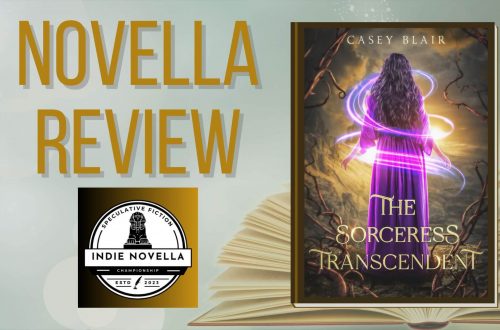I’ve written quite a few drafts of my book. It has suffered numerous changes; the first draft didn’t have magic or mysterious shadow creatures, the age of the main character got gradually older, and the ending completely changed a bunch of times. For each draft I edited and polished as well as I could and built up my own process, my own approach for handling edits. After I wrote my very first draft, I was adamant I wouldn’t even need to make changes, but time changed my mind.
Re-writing a draft and editing a whole damn book is very daunting. It’s no wonder that writers hate editing. I don’t see editing as a torture; I see it as a way to polish and reveal my story. Good writing is re-writing after all, and one way or another, you’re going to need to edit.
Here is my process.
Step 1: Wait
The easiest step, though not always. Many writers will say you need to sit and let your story stew in its own juices before you can approach it with fresh eyes, and honestly, I agree. It’s tempting to dive right in and start working straight away, especially if you work a full time job and don’t have the time to wait. But I’ve found waiting actually does let me disconnect from my own eyes and come back to it fresh.
I’d suggest waiting at least two weeks, but a month is my sweet spot. I am loathe to admit that any great period of waiting was forced upon me, rather than chosen. But it does help.
Step 2: Read
Read your book. If you’re planning a new draft, then I think this step is more essential. In this stage, look for glaring plot holes, characters that randomly disappear from scenes, things which just don’t make sense or lack context. Some people like to print off their manuscript and pour over it with a red pen, but I consider that a waste of paper because I know, personally, I make so many changes that printing them all would make me a super-villain in a children’s tale.
At the reading stage I wouldn’t bother with spelling, grammar or formatting; just read through your story at least once and get a feel for the ebb and flow of plot. Questions to ask yourself:
- Are my chapters too short/long?
- Does the plot make sense/are there any plot holes?
- Are the characters acting/speaking believably?
- Does the story slow down/sag at any points?
- Is there too much description and exposition?
- Does the conflict/action feel tense and punchy enough?
Step 3: The Dreaded Reverse Outline
Not everyone loves to outline, and I respect you crazy pantsers even if I disagree with your life choices. But reverse outlining, even a small bare bones outline, can really help you analyse the draft you’ve written and see where it may have problems. How I approach reverse outlining is to write a card for every chapter. Each card has the following:
- What’s happening?
- What is the protagonist’s/POV character’s external goal?
- What is there internal goal?
- What is the conflict?
- What are the stakes?
- What goes wrong? What is the disaster?
- What is the outcome?
- What is the significance of the chapter in terms of plot, character and theme?
- What should the reader turn to the next chapter?
You can do a variation of these, but what I try to do (and may not always succeed in) is use this reverse outline to see if my chapters are pulling their own weight. Each chapter must move the story forward and reveal something new/change something, and also have some aspect of theme or character development, preferably all three. If a chapter isn’t doing any of those things, then consider asking why you need it and give it the ‘ol heave ho.
Step 4: A Re-Write
If you’ve decided you have enough glaring errors, omissions and chapters you want to patch up, then go ahead and re-write. You don’t need to re-write the whole thing unless you want to, but if you’re new to writing and this is your very first draft, you may find your later chapters are better as your writing skill improves. That’s certainly how I felt with my first draft. I also felt that my first draft was a way to understand my story so I could write it properly the second time.
And when you’ve written another draft, you can do steps 1-3 again. I hear you groaning, but no one said writing was a quick hobby!
Step 5: The Surface Clean
Once I’m happy with a draft, I change the font to Comic Sans and read it again.
Yes, you read that right. I change the font to Comic Sans. Why? Because you write in a particular font, say Times New Roman, and your eyes get used to it. You skip over words. It may sound crazy, but changing your font to something different (not Wingdings!) can help you spot errors; typos, missing words, messed up formatting etc. And the second biggest tip I have is to read your work aloud. Don’t be embarrassed. Read it on the bus, read it to your cat, just read it loud and proud! Listen to how those words flow, and if you stumble over any sentences, they need work.
As part of my surface clean edits, I use this list to check each chapter has the following:
- The story moves forward.
- The protagonist has agency. They do things.
- The setting has little details but not enough to be boring.
- I describe at least three senses; touch, hearing, sight, smell, etc
- Character thoughts aren’t common, boring thoughts.
- There’s no exposition in dialogue.
- I try to avoid excessive use of pronouns at the start of a sentence. She did this, she did that.
When I’m happy with those edits, I move onto…
Step 6: Deep Clean Edits
This is where I start caring about typos, spelling mistakes, grammar, formatting, and all those twiddly things you probably think of first when you picture editing. Why not save time and do all these steps all at once? Because it’s very draining, and for me at least, trying to focus on individual words as well as the overarching story is too overwhelming. Chances are you’ll make so many changes to your chapters and maybe even scrap whole scenes that it makes sense to leave the nitty gritty things until last.
In this stage, I have a list of crutch and filter words that I search for. I will use CTRL+F short cuts to look for certain words and then cut them, or try to re-write sentences to sound better without them. I don’t cut everything; just things I know don’t add to the story. Lots of advice states you should avoid adverbs like the plague, but sometimes they’re fine.
These are the crutch words I try to limit as much as possible:
- Was
- Had
- That
- Back
- Down/Up
- Breath/Breathe
- Shrug/Nod/Reach
- See/Look/Hear
- Know/Realise/Seem
- Notice/Watch/Stare
- Remember/Wonder
- Think/Feel/Felt
- Touch
- The
- ADVERBS
A lot of the time, you don’t need filter words like she heard, she noticed, she touched x and it felt like y. But I break my own rules all the time, and I’m guilty for having my characters eyeball each other. Try taking away some of these words and see what you can do without them. Experiment. That’s half the fun in writing.
Never be afraid to write something because everything can be changed via editing. If your sentence reads terrible, don’t cry in the corner and curse your parents; rewrite it. Just don’t get stuck in a loop of never-ending editing. You do need to finish this book at some point. I am talking to myself here.
Step 7: Beta Readers
Once you’ve got a super polished story finished, you can’t congratulate yourself yet because writing is suffering and you’re on that path of darkness now. Instead, you throw your book at people and get them to read it. Don’t ask friends or family because they’re notoriously unreliable and will either mock your attempts or praise them to the point of sickness, depending on the type of friends/family you have.
The normal response is something like “Oh you wrote a book. That’s cool. Yeah it’s pretty good.”
So if you want actual feedback that will be useful to you, I recommend sourcing beta readers online. When they’ve given your book a look, they may offer ideas on how to improve your book. Don’t listen to every suggestion; do listen to where they think the story is confusing, or is too slow/too fast. You can then use this feedback to decide whether you want to do another round of edits.
If you decide to go the traditional publishing route, then you may be editing a lot more. Editing your own work is not something to be scared of, but to embrace. By writing so many drafts and making the changes I have, I’ve learnt to embrace this iterative way of writing and editing. There are core things about my book that I’ll never want to change, but if some changes and edits help to improve my story, then I am open to suggestions.
Well this is my process for editing, but please share yours!
Image Credit: @andrewtneel




